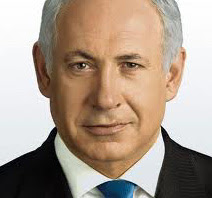
Barack Obama's fawning obsequiousness to his Israeli hosts last week will, no doubt, help to cement him in the favour of many Jewish voters in the USA. It does nothing, however, to advance the prospects for peace in the Middle East. It will have the opposite effect: by extending uncritical support for the Zionist state, it will encourage Israel to maintain its expansionist, colonialist regime.
The respected commentator, Uri Avnery, has pointed this out in articles written for the newspaper Haaretz and on the website for Gush Shalom, the Israeli peace bloc. In her recent blog, livefromoccupiedpalestine (see Useful Links on this page) the Australian activist Kim Bullimore laments Obama's failure to acknowledge the depth of Palestinian suffering under military occupation.
Forty years of military occupation of the remaining 22% of pre-1967 Palestine has resulted in continuing land thefts, the imprisonment of many elected politicians (amongst the 11,000 Palestinian political prisoners languishing in Israeli jails), the suspension of human rights, and the brutalisation and humiliation of an entire people. This by a state which sanctions torture of political prisoners and the assassination of Palestinian leaders.
Obama and his advisers are well aware of the history of this conflict and of the situation on the ground today, just as was that other shameless presidential hopeful, Hillary Clinton. Before succumbing to their political aspirations both Clinton and Obama took more measured and rational approaches to the Israel/Palestine question. In fact, both of them have spoken sympathetically of the Palestinians' plight. That was, before their naked, overweening ambition led them to defer to the power and influence of the Zionist lobby in the USA.
One can see the same influences at work here in Australia. It takes a brave politician indeed to speak up in support of justice and human rights for the Palestinians. Lyn Allison, leader of the Australian Democrats until her defeat at last year's elections, was one such. She will be sorely missed. Thank you, Lyn, for all your efforts on behalf of a downtrodden and dispossessed people.
 On Tuesday a 10 year old boy, Ahmed Moussa, was murdered by an Israeli border policeman in the village of Ni'lin. Ahmed had gone with some of his friends to try and remove a barbed wire barricade from village lands. From a distance of 10 metres the policeman shot him in the head, using live ammunition.
On Tuesday a 10 year old boy, Ahmed Moussa, was murdered by an Israeli border policeman in the village of Ni'lin. Ahmed had gone with some of his friends to try and remove a barbed wire barricade from village lands. From a distance of 10 metres the policeman shot him in the head, using live ammunition.












